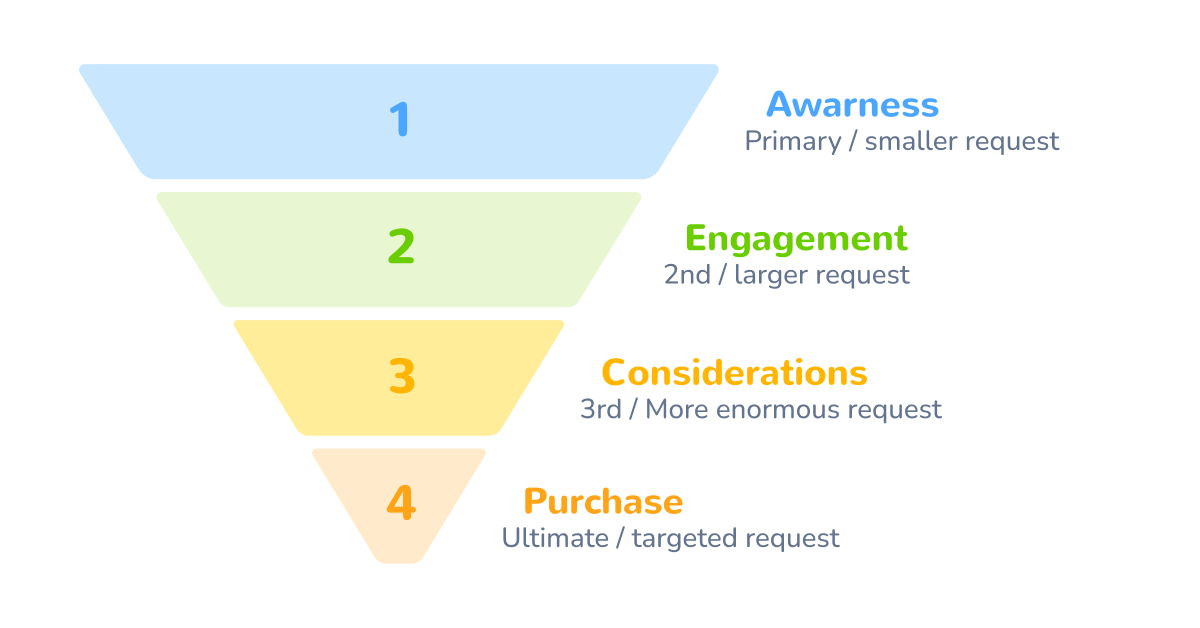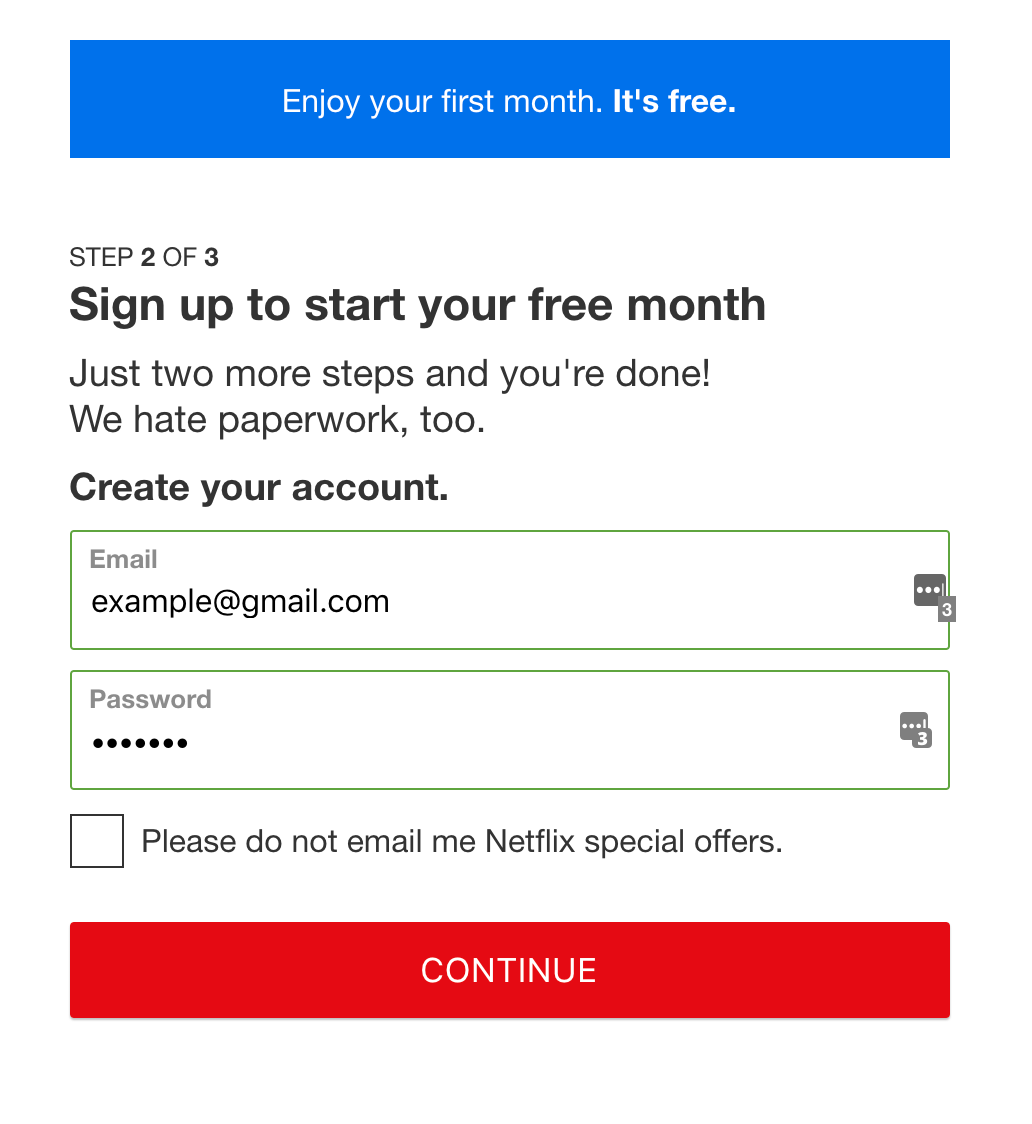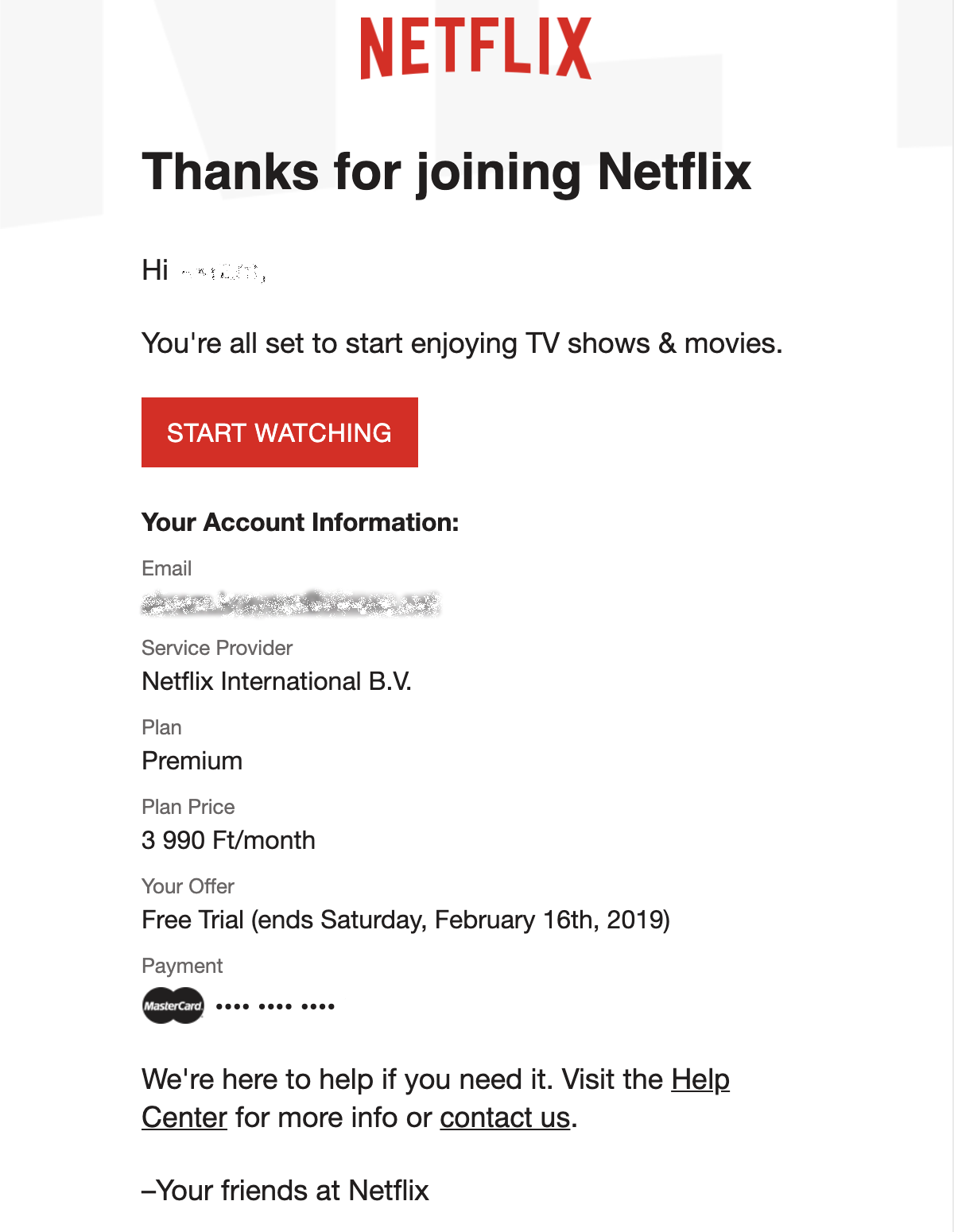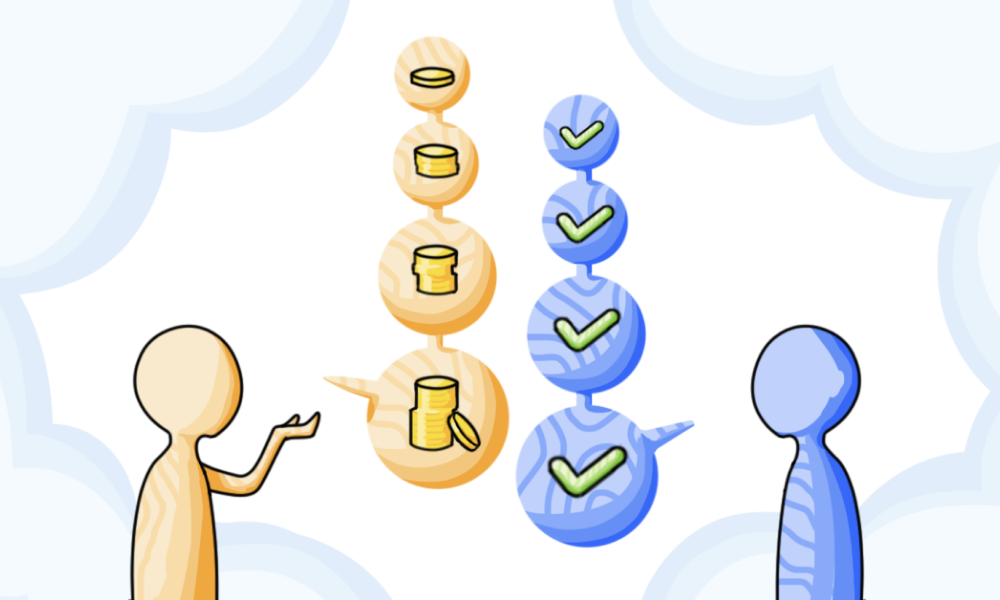Simply put, the Foot in the Door Technique recommends you put your foot inside the door first, then go into the house and do whatever you want, gaining the owner’s acceptance. Putting your foot inside the door is always challenging, as the owner might kick you out if they face any odds. But, once you gain the first consent, you have a bigger chance to have the rest.
Foot in the Door Technique is a gradual compliance obtaining process that increases the probability of acceptance of a more extensive request, starting from the small-scale and easier one. That is, the FITD technique is the opposite of the Door in the Face Technique, which begins from the more extensive request that is sure to be rejected. Freedman & Fraser, the two researchers from Stanford University, arranged a psychological experiment in 1966, where they proved that there are 30.6% more chances to gain consent using the FITD Technique.
What is the Foot in the Door Technique?
Based on the principle of consistency, the Foot in the Door Technique is a persuasion strategy that demonstrates that if a requester makes a minor acceptable request at the beginning, subjects will be more likely to gradually consent to the bigger and targeted ones.
Freedman & Fraser held two experiments to measure the effectiveness of the Foot in the Door Technique. In experiment 1, they contacted 156 women over the telephone, dividing them into 4 groups. Primarily, they asked three among the four groups to do a small favor, answering some questions about their household kitchen products. Three days after asking the first favor, the questioners asked for an enormous approval, letting the researchers raid their cabinets and catalog all the household products. The compliance rate of the first three groups with both requests was 52.8%, while the fourth group with the more extensive one only had a 22.2% compliance rate.
In experiment 2, the researchers divided 112 men and women into four groups. Like experiment 1, they primarily approached the first three groups with a small request, putting a small indication (of safe driving or keeping California Clean) in their car or home window. In the second request, they asked for enormous approval from all four groups, placing a giant billboard in their yard instead of putting small signs in their cars or windows. Both experiments prove that those who accepted the primary requests owned a kind of image they tried to maintain later. That self-image drove them to get more significant recommendations, increasing the 30.6% compliance rate.
Foot in the Door Technique and Sales Funnel
Online users learn about what they want by searching on search engines like Google, which leads them to related websites with the desired products. They tend to research before purchasing, comparing your offerings with your competitors. In the purely competitive marketing structure, sales don’t come easily. Instead, you will face difficulties with judgments from your consumers, who know the marketplace pretty well. The door-in-the-face technique can help you create a sales funnel, gradually increasing your visitors’ trust and turning them into buyers. You need an excellent Conversion Rate Optimization Strategy to find a way out of those difficulties through that sales funnel.
Implementing FITD Technique in Email Marketing Sales Funnel
Foot in the Door Technique recommends marketers make a minor request at first, which doesn’t oppose their interests nor force them to approve it. It is a good idea to ask for their email addresses in exchange for a freemium through a double opt-in process as a minor request. Your customers will love it if you care about their pain-point, providing solutions in a downloadable ebook or free trial of their desired products or services. You can simply ask for their email addresses to send a download link to their inboxes. It will let you generate the lead and measure its validity. Your Email Marketing Sales Funnel‘s journey starts at the time of Lead Generation. The process of obtaining compliance from consumers can be divided into four stages.

1Awareness: Primary Request
At the beginning of the interaction, keeping the door open is necessary, preventing the house owners from slamming the door in your face so that you can talk about something else later. When it comes to the case of digital marketing, it is best to attract users with something that interests them the most. The awareness stage aims to create brand awareness, providing knowledge to potential customers on why the services or products of your company can be chosen in the first place.
There are so many email marketing tools with different styles. You can compare MailBluster with others to get a clear understanding. Unlike any others, MailBluster offers up to 3000 emails sent without any cost, making itself outstanding to the marketplace. Users hate to provide their credit card information without experiencing the service. MailBluster considers this, allowing the users to use this tool without providing their credit cards. That is, this tool makes the user happier by using all the features for free though you will need a verified and approved AWS account to use it.
Another example is Netflix, which offers one month’s free trial to attract leads. Anyone can watch movies, TV series, documentaries, etc., with Netflix after signing up, providing an email address and a valid billing card. It will allow Netflix to make a more significant request through email later.

2Engagement: Second/Larger Request
As mentioned before, once you gain the first approval, you have greater chances to make the subjects comply with the larger one. You can make your second request only after the first approval from those who have become your leads, providing their email addresses. Otherwise, it will bring the lowest compliance rate.
Understanding the pain point of your leads is necessary before making the second one. MailBluster considers that the marketers need help creating templates, segmenting email lists, A/B Testing, real-time tracking, and many more. They offer all the solutions to these problems without any costs to engage potential customers.
On the other hand, Netflix sends the Thank You Email to those who sign up for the free trial.

After the gratitude, they make their second request: downloading the Netflix App. Those who are already enjoying Netflix freemium have more chances to approve than that of the second request as the App can make it easy for them to get that free service, though it is quite limited.

3Consideration: Third/More Enormous Request
Those who approved you twice are eligible to get the third request. The subjects in the consideration stage are already connected with you. They first knew about your company and then provided their contact information (email) in exchange for a free or trial version of your product. Before asking the third request, it is best to focus on the pain point once again to realize how to make the leads accustomed to your provided solution.
3000 emails might not be enough for large companies, as they get many more leads. Both Amazon SES and MailBluster offer this amount of email sending for free. But, after crossing the limit, MailBluster costs $0.60, and Amazon SES costs $0.10 for sending every 1000 emails. The total cost per 1000 emails sent is $0.70. That is, compared to MailChimp, MailBluster can save 99.74% money, making the third offering much stronger.
In the case of Netflix, they send emails on promoting movies, tv series, or other content relevant to the receivers’ interests. Let’s assume a particular user watched five movies in three days, all related to superheroes. If this platform sends a third recommendation to watch the upcoming superhero movie, there is a big-big chance for the subjects to accept this request, naturally. This request is not a big deal for those who approved the first two, as they are already familiar with the service provided by Netflix.

4Purchase: The Ultimate/Targeted Request
Generally, the sales funnel is divided into four stages, and the final stage contains the most significant and ultimate request for which the marketing strategy is mainly designed. The ultimate aim of the social media site is to make users open an account. The SaaS (software as a service) business aims to convince its leads to purchase. Though online retail shops have different strategies, they also want sales at the end of the day. Like other mediums, Netflix aims to influence its freemium users to switch to premium services by purchasing their services. Very few will purchase Netflix without experiencing it. At first, Netflix lets its users taste it, creating a demand that makes them thirsty for more. Then, this platform informs subscribers that the first-month freemium period is about to end, but they can switch to premium to enjoy Netflix even more. So, the marketing technique of Netflix is an example of the Foot in the Door Technique in online marketing.

On the other hand, the freemium offer includes the MailBluster branding logo in the email templates. Many marketers don’t want this label as they want to make their customers focus on their own logo. MailBluster offers those marketers the ultimate offer to become premium users by adding their billing cards.
Some Businesses face difficulties with the increasing prices of raw materials that force them to increase the cost of their products. It might make some of their customers switch to another brand. However, the Foot in the Door Technique can reduce that customer loss as it helps the marketers maintain the long-term relationship with their business. Preparing a Price increase Notice is challenging, but compliance tactics can help you with it.
Here are two examples of implementing a foot-in-the-door technique that might erase your confusion:
- Outreach marketing strategy
- Halloween email marketing strategy



 Contents
Contents
